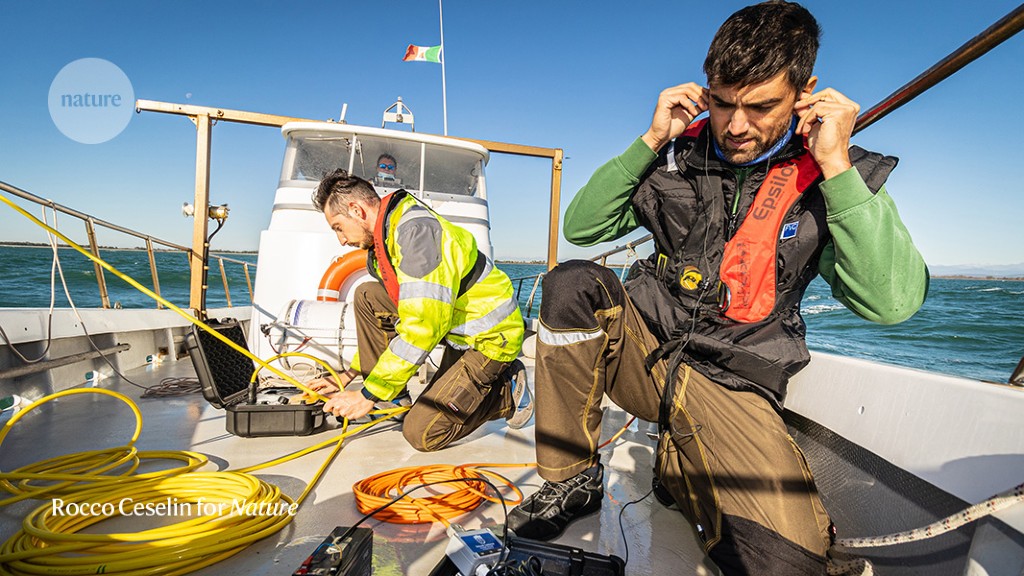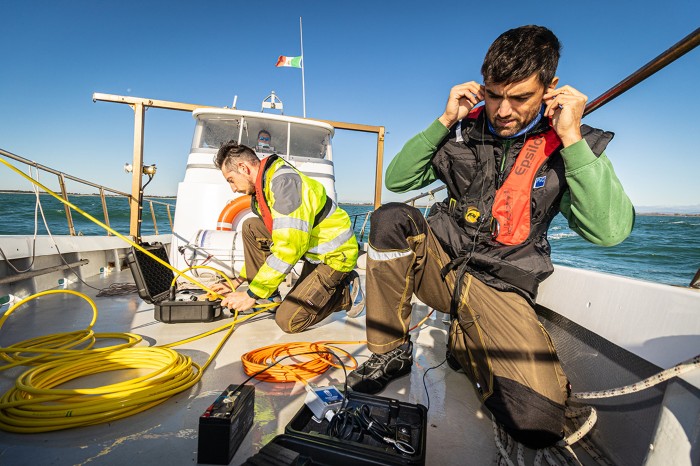

Antonio Codarin is a marine biologist with the Regional Environmental Protection Agency of Friuli Venezia Giulia. Credit: Rocco Ceselin for Nature
Cross the line between air and water, and you enter a very different world. The air can be completely silent, but listen below the sea’s surface and your ears fill with sound.
Here, I’m listening to a colleague using a wireless acoustic signal to trigger the release of an underwater noise-monitoring buoy moored to the sea bed. When the buoy floats to the surface, we retrieve its data. It is one of nine being used to continuously record underwater noise for a year in the northern Adriatic Sea between Italy and Croatia. The devices are part of the Soundscape project, which launched in 2019 and is funded mainly by the European Commission.
Underwater noise was in the European Commission’s 2008 Marine Strategy Framework Directive for protecting the ocean environment. We know that noise can affect marine species, but no one has extensive baseline data on underwater sound levels. Soundscape aims to fill this knowledge gap by developing a planning tool for underwater noise management.
As a marine biologist, I monitor water quality and underwater noise around the Gulf of Trieste in the Adriatic. The gulf is a busy shipping area, so most of what we record is the low, continuous noise of ship traffic. But we can also hear the beating sounds of drum fish, the ‘pops’ of damsel fish as they communicate with partners, and the snapping claws of pistol shrimp.
Growing up by the sea, I was intrigued by all the sounds I could hear when I ducked beneath the waves. For my master’s thesis, colleagues and I recorded noise in the Gulf of Trieste and showed that the hearing sensitivity of fish there was reduced when we played them the recording in our laboratory. Now our main questions concern the effects of underwater noise at the population scale.
It’s sunny in this picture, and we try to organize monitoring around the best possible weather. But sometimes we just have to get wet.
Nature 589, 484 (2021)
January 18, 2021 at 09:14PM
https://ift.tt/38UMhFv
Monitoring the snap, crackle and pop of the sea - Nature.com
https://ift.tt/2CoSmg4
Sea
/cloudfront-us-east-2.images.arcpublishing.com/reuters/CZF6NULMVVMEXHOP7JK5BSPQUM.jpg)
No comments:
Post a Comment